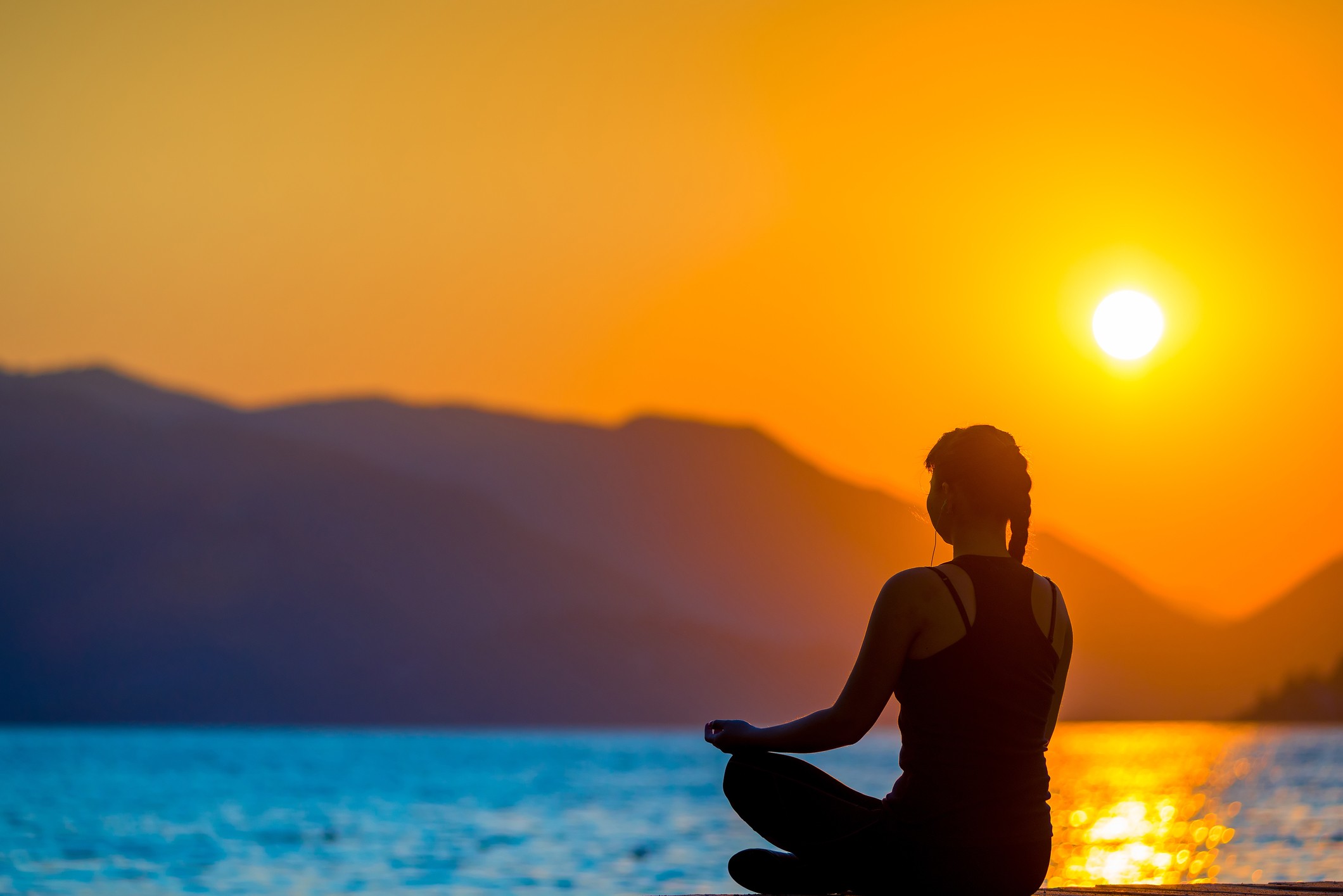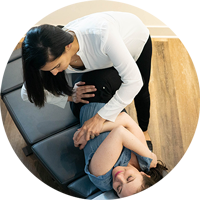A look at frequently asked questions about meditation with answers from Elizabeth Pattara, Chopra Center Educator and Founder of Samadhi. Elizabeth leads guided meditation in Chicago and hosts workshops at Aligned Modern Health.
If you’re curious about meditation and what it can do for you, read on and visit us for meditation classes and on-going learning opportunities.
1. What is meditation?
I like to think of meditation as a way to train your mind. We go to the gym and the lakefront path to exercise our bodies and our mind needs similar attention. Meditation helps us learn to train our minds to find calm and peace in our day.
2. What are the benefits of meditation?
Meditation has been proven to help a myriad of physical and emotional concerns. Once a person learns to practice, it is a free remedy that is accessible 24/7 from any location and has no side affects.
3. What is the best time of day to meditate?
The best time of day to meditate is whenever you have the best chance of creating a habit. This can be different for different people. Ancient traditions teach us to rise and set with the sun and therefore the best times of day to mediate are between the hours of 5-7AM and 5-7PM. This was historically a more quiet time in the universe. The advent of 24 hour accessibility and connection have laid waste to this schedule for many people. When beginning a meditation practice it is helpful to try and find a routine that fits into your life. If you work 2nd shift the 5-7AM and PM wont make sense or perhaps you have an infant who likes to dictate what time you can do anything. I would bet that you brush your teeth every day and you don’t set a time for it, you just do it. If we think of meditation the same way we think of basic grooming we have a better chance of creating a lasting practice. I learned that RPM is the perfect time to meditate for a vast majority of people. Come check out our workshop to learn what RPM is!
4. Is meditation religious?
Meditation can be religious for some people but it doesn’t have to be. The research on the benefits of meditation from a physical and mental perspective are being published in the most respected medical journals in the nation. Harvard, UMass. MIT and U of WI are just a few of the respected institutions publishing new work in the field. This has created an appreciation for the benefits of meditation outside of religious and spiritual circles.
5. What do I do if I become sleepy when trying to meditate?
Take a nap! Many people fall asleep when sitting down to practice. If you happen to fall asleep just enjoy the rest as that may be exactly what you need in that moment. If you fall asleep EVERY time you sit to mediate you need to review your sleep habits as you may be overtired.
6. Should I meditate with my eyes open or closed?
This is a personal preference. If you are comfortable with your eyes closed it may be easier to tune out your surroundings when your eyes are closed. If you feel anxiety or discomfort with your eyes closed you can try sitting with your eyes lowered, perhaps gazing softly at your hands or at an object of your choosing. There are several ways you can access mindfulness even without seated meditation through meditative walks or activities. You can even make eating chocolate a mindful activity!
7. How long should I meditate?
I recommend people starting with an amount of time that feels manageable for them and to gradually work up to a minimum of 20 minutes a day. You can start with 3 minutes a day and add a minute every week as you build up your practice. The key is to find what gives you the greatest chance of creating a habit. It is better to meditate for a few minutes each day rather than 2 hours once a month.
8. Do I need a teacher? What are the benefits of having a teacher?
There are many ways to get started and technology has only expanded options for people seeking solutions. Some people enjoy using apps like Insight Timer or Headspace where they can do things on their own time and not have to worry about scheduling classes. There are also online classes from various providers such at the Chopra Center for Wellbeing where you can learn via webinar. The reason some people like to learn with a teacher in person is the same reason why gyms and personal trainers have thriving businesses. I may know intellectually that we should go to the gym to stay fit and that research shows that high intensity interval training torches the most calories. However, I may still just take a lesiruely stroll on the treadmill while cathicng up on my DVR. I MAY even decide my couch is more comfortable than the treadmill for catching up on my DVR. A teacher can help us get on track, answer questions, learn how to overcome obstacles and may also provide a community to share our experiences with.
9. How do I get started?
Try experimenting with some online resources or apps to give yourself a sense of your comfort level with stillness. Many yoga studios and some religious communities offer free sessions but may not offer much instruction in those sessions. You may want to try an introductory course or workshop.









